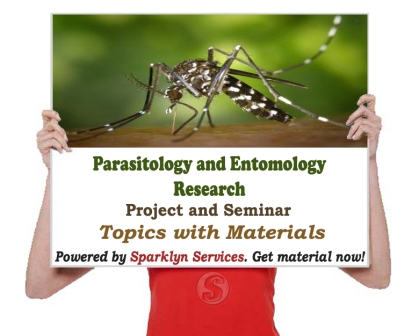1.1 Introduction
Fish is an essential source of animal protein widely consumed in many parts of the world. In terms of livestock agriculture, statistics show that there about 1.1 million pigs, 7 million goats, 24.6 million sheep, 1.4 million dairy cattle, and 13.6 million beef cattle as well as 1.6 million ostriches, 31.8 million layers, and 113 million broilers in South Africa (Meissner et al, 2013). South Africa fish consumption per capita per year is said to be 41kg and is second only to Ghana in Africa (Jaja et al, 2017). In the Southern African region, fish consumption is four times higher than any other region in Africa and South Africa plays a major role regarding livestock production and fish supply in the continent (Meissner et al, 2013 and Cawthorn et al, 2013).
Even though fish plays a crucial role in human nutrition, a significant proportion of foodborne diseases have been linked to its consumption. Epidemiological data suggest an escalating incidence of foodborne diseases. A good number of these diseases occur due to poor animal husbandry systems and failure to maintain proper hygiene during food processing Cawthorn (Jaja et al, 2017). Poor hygiene management and other faulty abattoir processes such as improper evisceration increase the chances of cross-contamination of gut pathogens (Escherichia coli, Salmonella spp., Campylobacter spp., Staphylococcus aureus, and enteric bacteria) to fish (Muchenje et al, 2016).
Escherichia coli is part of the normal flora of the gastrointestinal tract of humans and animals. It becomes pathogenic to the immunocompromised person (children, pregnant mothers, and people with a chronic debilitating illness such as diabetes) through contaminated water and food (Iweriebor et al, 2016). Many E. coli strains have emerged as leading zoonotic foodborne pathogens. Diarrheagenic pathotypes frequently implicated foodborne for diseases include enterotoxigenic E. coli (ETEC), enteropathogenic E. coli (EPEC), Shiga toxin-producing E. coli (STEC), enteroaggregative E. coli (EAEC), enterohemorrhagic, diffusely adherent E. coli (DAEC), and E. coli (EHEC); a subclass of enteroinvasive E. coli (EIEC), neonatal meningitis E. coli (NMEC), E. coli, and uropathogenic E. coli (UPEC). Due to their ability to cause numerous foodborne disease outbreaks in humans, they have become a significant public health threat (Mhone et al, 2011).
Staphylococcus aureus is among the leading causes of foodborne diseases in humans. It is a Gram-positive, nonspore forming, nonmotile, catalase-positive coccus which is ubiquitous in humans and the environment (Graber et al, 2013). S. aureus is found commonly on the skin, hair, noses, and respiratory tract of humans and animals. It multiplies rapidly at room temperature producing toxins which cause illnesses when it enters the body. The main route of transmission of S. aureus is through a cut, infected wound, and ingestion of contaminated food (Jiamboonsri et al, 2011).
Staphylococcus aureus is commonly associated with intoxications due to its ability to produce a variety of potent staphylococcal enterotoxins (SEs) (Mhone et al, 2011). The SEs are resistant to inactivation by GIT proteases such as pepsin and display strong thermoresistance, an essential property of SEs for food safety considerations and a potential problem for public health (Casagrande et al, 2010). Staphylococcus aureus produces three types of hemolysins, known as alpha, beta, and delta toxins. The beta-hemolysin gene encodes the beta toxins that inhibit the ciliary movement of human lungs and corneas (Abdalrahman et al, 2015). Due to its transient nature, many staphylococcal food poisonings (SFP) go unreported; this is in addition to the fact that the symptoms of SFP are similar to those of food poisoning caused by Bacillus cereus (Stewart et al, 2017).
In humans, gastroenteritis attributable to staphyloenterotoxicosis or staphyloenterotoxemia can occur within 1 to 7 hours after consumption of contaminated food (Shuiep et al, 2009). Dehydration due to frequent diarrhea and vomiting; infections of the skin; and soft tissue, joint, bone, respiratory, and endovascular disorders are other common clinical pictures in infected humans. Furthermore, diseases such as pneumonia, meningitis, osteomyelitis, endocarditis, and toxic shock syndrome are commonly associated with staphylococcal infection (Jiamboonsri et al, 2011). Further compounding the challenges posed by staphylococcus infection is the increasing spate of methicillin-resistant S. aureus (MRSA), which have been reported in pork, chicken, beef, and other fish in many countries (Hammad et al, 2012).
In many developing countries, the incidence of foodborne diseases (FBD) is often associated with resistant bacteria (Rodríguez et al. 2015). Food-associated microbes harboring transferable antibiotic resistance genes are of significant public health concern. This is because they can cause FBD and also act as a reservoir for spreading antibiotic resistance genes to enteric and commensal bacteria by horizontal gene transfer of mobile genetic elements (Marty et al, 2012). The problem of antibiotic resistance could even be more prominent in South Africa given that farmers under the Stock Remedies Act (Act 36 of 1947) could buy and use the veterinary drug without a prescription. Hence, this study is aimed at determining the antimicrobial resistance profile of Staphylococcus aureus and Escherichia coli isolates from raw fish, slaughtered carcasses in the informal and informal fish sectors in the Eastern Cape Province of South Africa (Henton et al, 2011).




